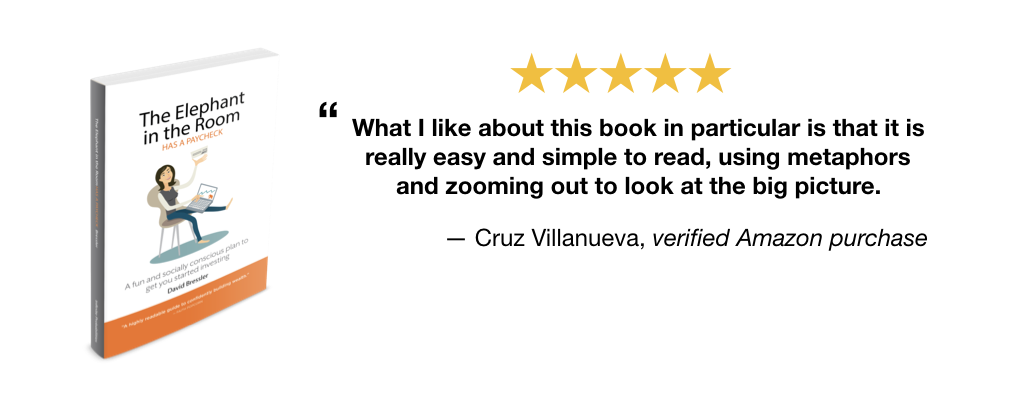An investing strategy is more than just the tactics of how to invest. Unfortunately, most “investing companies” act like Americans traveling overseas… you’ve seen it I’m sure.
When someone says they don’t speak English, how does a typical American react?
They talk slower and louder… in English.
Advisors and brokerage marketing is the same as our traveling American. They simply try to figure out how to say the same thing they’ve always been saying in different ways. Start young. Buy mutual funds. You can spend 3% of your retirement savings a year (no 4%, no 2%… how long are you going to live?).
Regular people, the kind I work with, tune out very early in that process. I’ve found it’s simple:
- People don’t trust “the banks”.
- When people put money aside each month, but at the end of the month find their balance is lower than the start of the month, they respond by spending instead of saving. This happens easily if someone has, for example, a $5000 portfolio, adds $50 in a month, but finds that the $5000 dropped in value by $75. Their ending monthly balance is $25 lower than they started even though they’ve ADDED $75. It’s demotivating, habit breaking, and people check out.
Money is as emotional as food. And, there are as many good strategies for investing as there are for dieting. Few dieting strategies have to do with educating people about metabolism rates, the way the body processes food, or how food is made.
But that’s how investment advisors prefer to describe their investment strategies.
I prefer a human approach
A human approach to investing involves three elements:
- Make sense. It has to make sense. Not at a “financial educational” level, but at a human level. Tell people a story that they can relate to, that they can make their own, and they’ll find the curiosity to learn more. They’ll have a framework in which to operate and structure their decisions; evaluate their progress. I’ve been diving deep under the ocean, and the hardest thing is finding your way in the open ocean when you have no reference points to anchor your objectives to. Same goes with investing.
- Motivation. The theory of creating new habits involves a trigger, the habit, and the reward. Advisors forget the reward is NOT the act of participating. The reward is the results of participating.. The thing is, markets have volatility. If the way you measure your results is limited to portfolio value, people are going to go nuts trying to figure out if they’re doing well. That measuring will not reinforce the habit (because it’s not rewarding). Invariably investors make the wrong decisions as a result. You have to create new metrics that are designed to motivate the “regular” individual investor. At least until they build up the resistance to making incorrect decisions because of market volatility. Change your perspective with the right metrics, and you’ll change your entire experience (for the better).
- Mastery. The path to mastery is long, but rewarding. Even people who don’t want to become “experts” want to understand how to get better. How to learn more. How to make better decisions in the future. How to have a pride of ownership in their financial success. The thing is, most people get their financial education from “friends”, financial news, or industry trade rags (where it’s mostly pay-to-play). If you’re following Apple, do you read the rumor sites or their 10Q’s? Do you listen to Jim Cramer or Tim Cook? Do you even know who the CEO’s of your companies are? (I know every one by name and background.) There’s a way to become educated over time, and develop a mastery over your strategy. You’ll gain confidence. Confidence breeds success, and better decision making over time. There’s plenty of time to develop mastery over your lifetime investing strategy. I’ve been investing for 35 years, that’s a long time to absorb and internalize what matters to create financial security for you and your family.
It goes without saying that my book does exactly this. In fact, the only additional two topics in the book are my personal story and a tactical how-to get started.
I’m also going to be simplifying my free online course, coaching, and group education into this structure. When I do, the course is probably not going to be free anymore. If you’re thinking of switching jobs soon, please have a look at the free email course as it speaks to people rolling over their 401K’s who are trying to decide how to invest the money now that they have more control (and responsibility) for picking their investments.


Great post! The ‘new metrics’ part got me thinking about how dividend investors tend to track dividends received rather than stock prices. If invested in company’s that raise their dividends every year, it’s very likely you will see a long trend of upward growth (with maybe a slight decline during depressions). That’s a lot more motivating than watching volatile stock prices bounce around!
Hi Ben, Thanks for visiting.
You and I share a love for dividend aristocrats. Not all companies stay aristocrats but when they do, that increase every year, on average, helps maintain purchasing power AND gives investors a way to track a real metric that always goes up.
I also like it from a long term planning point of view… because you can invest without having to conjure up estimates of the future — how long will the investor live? what will their medical bills be? etc. Like managing our money while we’re working — we manage our lifestyle to our salary. When investing in aristocrats, retirees can manage to their “dividend salary” and use the principle as necessary. Hopefully, people can counter dividend income loss from spent principle with dividend aristocrat dividend increases.
Anyways, I’m glad you liked the post.
David
PS For anyone reading this thread, I highly recommend the free newsletter that Ben (from the previous comment) produces. I also subscribe to his premium monthly newsletter which is a very good value.